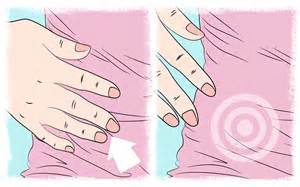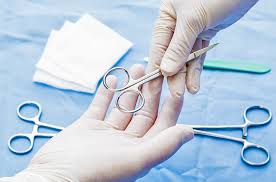Surgery is often the main treatment for earlier-stage colon cancers. The type of surgery used depends on the stage (extent) of the cancer, where it is, and the goal of the surgery.
Any type of colon surgery needs to be done on a clean and empty colon. You will be put on a special diet before surgery and may need to use laxative drinks and enemas to get all of the stool out of your colon. This bowel prep is a lot like the one used before a colonoscopy.
Polypectomy and local excision
Some early colon cancers (stage 0 and some early stage I tumors) and most polyps can be removed during a colonoscopy. This is a procedure that uses a long flexible tube with a small video camera on the end that’s put into the person’s rectum and threaded into the colon. These surgeries can be done during a colonoscopy:
- For a polypectomy, the cancer is removed as part of the polyp, which is cut at its stalk (the part that looks like the stem of a mushroom). This is usually done by passing a wire loop through the colonoscope to cut the polyp off the wall of the colon with an electric current.
- A local excision is a slightly more involved procedure. Tools are used through the colonoscope to remove small cancers on the inside lining of the colon along with a small amount of surrounding healthy tissue on the wall of colon.
When cancer or polyps are taken out this way, the doctor doesn’t have to cut into the abdomen (belly).
Colectomy
A colectomy is surgery to remove all or part of the colon. Nearby lymph nodes are also removed.
- If only part of the colon is removed, it’s called a hemicolectomy, partial colectomy, or segmental resection. The surgeon takes out the part of the colon with the cancer and a small segment of normal colon on either side. Usually, about one-fourth to one-third of the colon is removed, depending on the size and location of the cancer. The remaining sections of colon are then reattached. At least 12 nearby lymph nodes are also removed so they can be checked for cancer.
- If all of the colon is removed, it’s called a total colectomy. Total colectomy isn’t often needed to treat colon cancer. It’s mostly used only if there’s another problem in the part of the colon without cancer, such as hundreds of polyps (in someone with familial adenomatous polyposis) or, sometimes, inflammatory bowel disease.
How it’s done
A colectomy can be done in 2 ways:
- Open colectomy: The surgery is done through a single long incision (cut) in the abdomen (belly).
- Laparoscopic-assisted colectomy: The surgery is done through many smaller incisions and special tools. A laparoscope is a long, thin lighted tube with a small camera and light on the end that lets the surgeon see inside the abdomen. It’s put into one of the small cuts, and long, thin instruments are put in through the others to remove part of the colon and lymph nodes.
Because the incisions are smaller in a laparoscopic-assisted colectomy than in an open colectomy, patients often recover faster and may be able to leave the hospital sooner than they would after an open colectomy. But this type of surgery requires special expertise, and it might not be the best approach for everyone. If you’re considering this type of surgery, be sure to look for a skilled surgeon who has done many of these operations.
Overall survival rates and the chance of the cancer returning are much the same between an open colectomy and a laparoscopic-assisted colectomy.
If the colon is blocked
When cancer blocks the colon, it usually happens slowly and the person can become very sick over time. In cases like this, a stent may be placed before surgery is done. A stent is a hollow metal or plastic tube that the doctor can put inside the colon and through the blockage using a colonoscope. This tube to keeps the colon open and relieves the blockage to help you prepare for surgery.
If a stent can’t be placed in a blocked colon or if the tumor has caused a hole in the colon, surgery may be needed right away. This usually is the same type of colectomy that’s done to remove the cancer, but instead of reconnecting the ends of the colon, the top end of the colon is attached to an opening (called a stoma) made in the skin of the abdomen. Stool then comes out this opening. This is called a colostomy and is usually only needed for a short time. Sometimes the end of the small intestine (the ileum) instead of the colon is connected to a stoma in the skin. This is called an ileostomy. Either way, a bag sticks to the skin around the stoma to hold the waste.
Once the patient is healthier, another operation (known as a colostomy reversal or ileostomy reversal) can be done to put the ends of the colon back together or to attach the ileum to the colon. Rarely, if a tumor can’t be removed or a stent placed, the colostomy or ileostomy may need to be permanent.
 GALLBLADDER REMOVAL
GALLBLADDER REMOVAL More than 200,000 US cases per year
More than 200,000 US cases per year




 A hiatal hernia occurs when the upper part of your stomach bulges through the large muscle separating your abdomen and chest (diaphragm). Your diaphragm has a small opening (hiatus) through which your food tube (esophagus) passes before connecting to your stomach.
A hiatal hernia occurs when the upper part of your stomach bulges through the large muscle separating your abdomen and chest (diaphragm). Your diaphragm has a small opening (hiatus) through which your food tube (esophagus) passes before connecting to your stomach.
 Common Surgical Procedures
Common Surgical Procedures